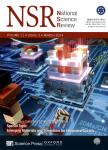Chemical order-disorder nanodomains in Fe3Pt bulk alloy
Chemical order-disorder nanodomains in Fe3Pt bulk alloy作者机构:Beijing Advanced Innovation Center for Materials Genome Engineering Institute of Solid State Chemistry University of Science and Technology Beijing X-Ray Science Division Argonne National Laboratory Beijing National Laboratory for Condensed Matter Physics Institute of Physics Chinese Academy of Sciences NIST Center for Neutron ResearchNational Institute of Standards and Technology
出 版 物:《National Science Review》 (国家科学评论(英文版))
年 卷 期:2022年第9卷第12期
页 面:211-219页
核心收录:
学科分类:07[理学] 070205[理学-凝聚态物理] 0702[理学-物理学]
基 金:supported by the National Key R&D Program of China (2020YFA0406202) the National Natural Science Foundation of China (22175018, 22090042 and 21731001) the China Postdoctoral Science Foundation (2019M660446) the Program for Postdoctoral Innovative Talents (BX20190031) Fundamental Research Funds for the Central Universities(FRF-NP-18-003)
主 题:Fe3Pt alloy chemical order nanodomain local structure pair distribution function
摘 要:Chemical ordering is a common phenomenon and highly correlated with the properties of solid *** means of the redistribution of atoms and chemical bonds,it invokes an effective lattice adjustment and tailors corresponding physical *** date,however,directly probing the 3D interfacial interactions of chemical ordering remains a big *** this work,we deciphered the interlaced distribution of nanosized domains with chemical order/disorder in Fe3pt bulk *** F-STEM images evidence the existence of such *** reverse Monte Carlo method with the X-ray pair distribution function data reveal the 3D distribution of local structures and the tensile effect in the disordered domains at the single-atomic *** chemical bonding around the domain boundary changes the bonding feature in the disordered side and reduces the local magnetic moment of Fe *** results in a suppressed negative thermal expansion and extended temperature range in Fe3Pt bulk alloy with *** study demonstrates a local revelation for the chemical order/disorder nanodomains in bulk *** understanding gained from atomic short-range interactions within the domain boundaries provides useful insights with regard to designing new functional compounds.



